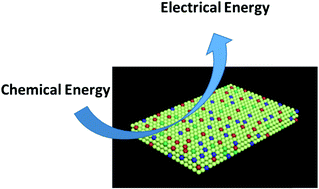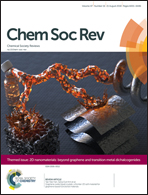Multimetallic nanosheets: synthesis and applications in fuel cells
Abstract
Two-dimensional nanomaterials, particularly multimetallic nanosheets with single or few atoms thickness, are attracting extensive research attention because they display remarkable advantages over their bulk counterparts, including high electron mobility, unsaturated surface coordination, a high aspect ratio, and distinctive physical, chemical, and electronic properties. In particular, their ultrathin thickness endows them with ultrahigh specific surface areas and a relatively high surface energy, making them highly favorable for surface active applications; for example, they have great potential for a broad range of fuel cell applications. First, the state-of-the-art research on the synthesis of nanosheets with a controlled size, thickness, shape, and composition is described and special emphasis is placed on the rational design of multimetallic nanosheets. Then, a correlation is performed with the performance of multimetallic nanosheets with modified and improved electrochemical properties and high stability, including for the oxygen reduction reaction (ORR), hydrogen evolution reaction (HER), formic acid oxidation (FAO), methanol oxidation reaction (MOR), ethanol oxidation reaction (EOR), and methanol tolerance are outlined. Finally, some perspectives and advantages offered by this class of materials are highlighted for the development of highly efficient fuel cell electrocatalysts, featuring low cost, enhanced performance, and high stability, which are the key factors for accelerating the commercialization of future promising fuel cells.

- This article is part of the themed collection: 2D nanomaterials: beyond graphene and transition metal dichalcogenides


 Please wait while we load your content...
Please wait while we load your content...